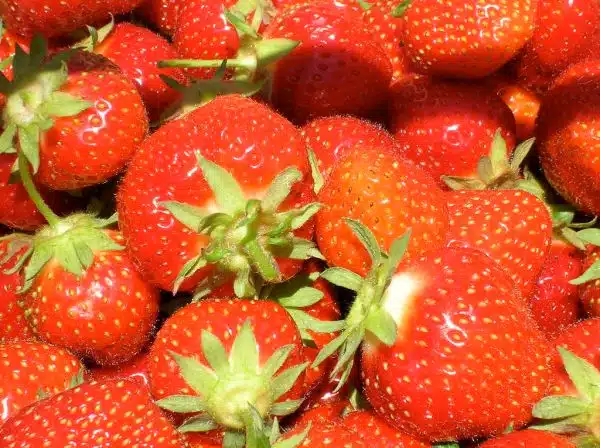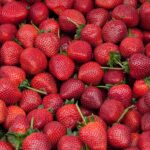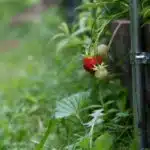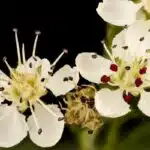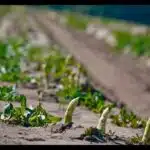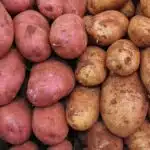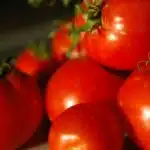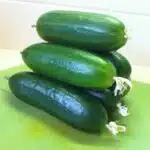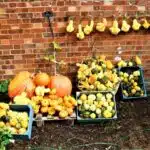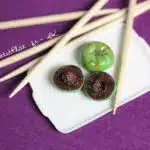Strawberries are a popular and beloved fruit, known for their sweet and tangy flavor. Harvesting strawberries at the right time is crucial to ensure the best taste and quality. As a horticulturalist and fruit specialist, it is important to understand when and how to harvest strawberries for optimal results.
The timing of strawberry harvesting can vary depending on the variety, climate, and location of the plants. It is generally recommended to wait until the berries have fully ripened before harvesting. This can be determined by observing the color of the berries; they should be bright red all over with no white or green spots. Additionally, gently squeezing a berry should result in a slight give without being too soft or mushy. Proper harvesting techniques also play a significant role in maintaining the quality of strawberries post-harvest. By adhering to expert guidance on harvesting methods, gardeners can ensure that their strawberries are not only delicious but also safe for consumption.
The Importance Of Proper Strawberry Harvesting
Strawberries are a highly delicate fruit that requires proper handling techniques to ensure maximum quality and flavor. The importance of ripeness cannot be overstated when it comes to strawberry harvesting. Harvesting strawberries at the right time is crucial for the overall taste, texture, and appearance of the fruit.
The ideal time to harvest strawberries is when they are fully ripe. However, it can be difficult to determine when this stage has been reached as strawberries may still appear red even when they are not yet fully matured. To ensure accurate ripening assessment, one should examine the color, size, and overall firmness of the fruit.
Proper handling techniques should also be observed during strawberry harvesting to avoid bruising or damaging the fruit. These techniques include using sharp shears or scissors to cut off the stem without pulling on the fruit, avoiding stacking or crushing them during transport, and storing them in cool temperatures immediately after harvest. By following these guidelines, one can maximize the quality and shelf life of their freshly harvested strawberries.
Understanding strawberry ripening is essential in determining when to harvest these delicate fruits successfully.
Understanding Strawberry Ripening
Strawberry ripening is a crucial process in ensuring that the fruit is at its optimal stage for harvesting. Ripening occurs when the fruit reaches its peak maturity, and the sugars, acid, and color compounds are balanced to produce a sweet and flavorful berry. There are three stages of strawberry ripening: white, pink, and red.
The white stage is when the strawberry is still green and immature. The pink stage follows as the fruit starts to turn from green to a pale pink color. At this point, the strawberry begins to soften, and its seeds start turning from yellow to brown. Finally, the red stage is when the strawberry has reached its full maturity, with bright red coloration and fully developed flavors.
Tips for determining optimal ripeness include observing changes in coloration from light green to pale pink to bright red as well as checking for softness in texture. Sweetness can also be used as an indicator of ripeness by tasting a sample of berries regularly throughout the growing season.
- When strawberries are ripe, they have a glossy appearance.
- A ripe strawberry has an even deep-red hue.
- Ripe strawberries will have an aroma that’s sweet and noticeable.
- Ripe strawberries should be plump but firm.
Understanding strawberry ripening is critical in ensuring that you harvest your crop at its optimal time for flavor and nutritional value. In the next section, we will explore factors affecting strawberry harvesting such as weather conditions and soil composition.
Factors Affecting Strawberry Harvesting
To ensure a successful and bountiful strawberry harvest, there are several factors to consider. Weather conditions play a crucial role in determining the ripeness of the berries, as well as their susceptibility to pests and diseases. It is important to monitor the forecast closely and plan your harvest accordingly. Ideally, you want to pick your strawberries during dry weather, when the fruit is plump, firm and fully red.
Pests such as birds, slugs and insects can also affect the quality of your strawberry crop. To prevent damage from these critters, consider erecting bird netting or using insecticides that are safe for human consumption. However, it is important to note that excessive use of pesticides can lead to residue buildup on the fruit, which can negatively impact its flavor and quality.
When harvesting strawberries, it is essential to handle them with care to ensure maximum flavor. Always pick the fruit by gently twisting it off the stem without damaging the surrounding plant tissue. Avoid washing the berries until just before consuming them, as excess moisture can cause them to spoil more quickly. By following these guidelines and paying close attention to weather conditions and pest activity, you can enjoy a bountiful strawberry harvest that is bursting with flavor.
| Factor | Consideration | Impact |
|---|---|---|
| Weather | Dry weather | Ideal for picking ripe strawberries |
| Wet weather | Can cause fruit spoilage | |
| Pests | Birds/Insects/Slugs | Can damage or consume strawberries |
| Pesticide use | Can leave residue on fruit impacting taste |
As horticulturalists/fruit specialists, we know that a successful strawberry harvest depends on various factors such as weather patterns and pest management techniques. To maximize flavor in harvested strawberries, one must be mindful of how they handle the fruit from picking to consumption. Proper post-harvest handling also plays an essential role in maintaining optimal taste in fresh strawberries.
Moving forward, understanding the different strawberry varieties and their harvest times is crucial in planning for a successful yield.
Different Strawberry Varieties And Their Harvest Times
As discussed in the previous section, factors such as temperature, moisture levels, and fruit ripeness play a crucial role in determining when to harvest strawberries. However, another important factor to consider is the variety of strawberry being grown. Different varieties have unique characteristics that influence their optimal harvesting time.
Strawberry varieties can be classified into three main categories: June-bearing, everbearing, and day-neutral. June-bearing strawberries typically produce a single large crop in late spring to early summer. These berries are best harvested when they are fully ripe and bright red in color. In contrast, everbearing and day-neutral strawberries produce multiple small crops throughout the growing season. For these varieties, it is best to harvest the fruit when it is firm and evenly colored.
When it comes to harvesting techniques for strawberries, there are several options available. One common method is to handpick the fruit by gently twisting it off the stem with your fingers. This approach works well for smaller-scale operations but can be time-consuming for larger farms. Another option is machine harvesting, which involves using specialized equipment to pick berries quickly and efficiently. While this method can save time and labor costs, it may result in some bruising or damage to the fruit.
In conclusion, understanding the various strawberry varieties and their unique characteristics can help growers determine the optimal time to harvest their fruit. Additionally, selecting an appropriate harvesting technique based on farm size and budget can ensure that berries are picked efficiently without causing unnecessary damage to the crop. In the next section, we will explore another important aspect of strawberry harvesting: identifying the best time of day to pick ripe berries.
The Best Time Of Day To Harvest Strawberries
The best time of day to harvest strawberries is early in the morning or late in the afternoon. Harvesting at these times results in a more flavorful and nutritious fruit. This is due to the fact that during these times, the sugar content in the berries is at its highest, and the temperature is cooler which helps to preserve their freshness.
Harvesting strawberries early in the morning has an added advantage of avoiding pests that are active during daylight hours. These pests include birds, slugs, and other insects that can damage or destroy your crop. Additionally, harvesting in cooler temperatures means less dehydration and wilting of your berries before you get them into cold storage.
Late afternoon harvesting is also beneficial for those who have busy mornings but want to harvest their strawberries before nightfall. The late afternoon sun has less intensity than earlier in the day which makes it easier on both you and your plants while picking. However, be aware that if you wait too long into the evening, moisture levels increase which can lead to mold growth on your harvested fruit.
With knowledge about when to harvest strawberries comes information on how to do so efficiently. In terms of tools needed for strawberry harvesting, it is important to have a container or basket with ample space for your berries as well as gloves to protect your hands. Additionally, having sharp pruning shears or scissors will make it easier and faster to clip stems without damaging surrounding fruit. Remember that proper timing paired with good tools will ensure a successful harvest season!
Tools You Need For Strawberry Harvesting
Harvesting strawberries is a delicate task that requires both care and precision. Knowing when to harvest strawberries is just as important as knowing how. According to the USDA, the average yield of strawberries per acre in 2020 was around 23,200 pounds. However, this yield can only be achieved by harvesting at the right time with proper techniques.
Must-have equipment for strawberry harvesting includes sharp scissors or garden shears, a wide-brimmed hat to protect from the sun, and a medium-sized container for collecting the berries. It’s also crucial to wear gloves while picking strawberries as they are delicate fruits that bruise easily.
Proper technique for picking strawberries involves holding them gently between your fingers and cutting their stem with scissors or garden shears near the top of the fruit. Avoid pulling the berries off the plant as it can cause damage to both the fruit and plant. Also, make sure to pick only ripe strawberries by looking for fully red fruits without any white or green patches.
To pick strawberries without damaging the plant, start by gently lifting up each leaf cluster to see if there are any ripe berries hiding underneath. Once you find a ripe berry, cut its stem close to where it attaches to the crown of the plant. Remember not to tug on or twist any part of the plant while harvesting as it can break stems or damage roots. By following these simple steps and using proper technique, you can ensure a bountiful harvest of delicious and healthy strawberries!
How To Pick Strawberries Without Damaging The Plant
Strawberry harvesting techniques are an important part of ensuring that the fruit is picked at peak ripeness without damaging the plant. In order to pick strawberries without harming the plant, it is essential to understand how the fruit grows and how to handle it properly during harvesting. The following section outlines some best practices for picking strawberries that will help prevent damage to your plants.
Firstly, when picking strawberries, it is important to grasp the stem just above the fruit and gently twist until it comes off in your hand. Avoid pulling or tugging on the berry as this can cause damage to both the fruit and the plant itself. If you find that a berry is particularly difficult to remove, use scissors or pruning shears to carefully cut it from the stem. This will ensure that you do not injure the plant or accidentally remove any unripe fruit.
Secondly, be sure to only harvest ripe strawberries as they are much more delicate than unripe ones. Ripe strawberries will be deep red in color with no white or green areas visible on them. When picking strawberries, take care not to touch any unripe berries as this can cause them to rot prematurely. Additionally, avoid stepping on or otherwise crushing any plants as this can cause damage that will impact future yields.
Lastly, after harvesting your strawberries, take care when transporting them back inside so as not to bruise or crush them. Use shallow baskets or containers so that berries are not piled up too high on top of each other and refrigerate them immediately once indoors. By following these simple tips for preventing plant damage while picking strawberries, you can ensure a bountiful harvest and delicious fruit for all.
- Handle ripe strawberries with care
- Use scissors or pruning shears if necessary
- Do not touch unripe berries during harvesting – as this can damage the plant and reduce the yield for future harvests.
Storing And Transporting Strawberries
The belief that strawberries must be eaten fresh is not entirely true. When stored and transported correctly, they can last for a few days or even a week. For best results, store strawberries in the refrigerator at 32-36°F with high humidity (90-95%) to prevent them from drying out and becoming too soft. Make sure to remove any damaged or moldy berries before storing them.
Transporting strawberries requires careful handling to avoid bruising or crushing. The ideal temperature during transport is between 32-36°F, so use refrigerated trucks if possible. Avoid stacking the containers too high to prevent crushing, and always handle with care.
Proper storage and transport are crucial factors in ensuring maximum yield and quality of strawberries. By following these guidelines, growers can serve their customers with the freshest and most delicious strawberries available. In the next section, we will explore some tips for maximizing yield and quality during harvest time.
Tips For Maximizing Yield And Quality
To maximize yield and quality of strawberries, it is important to keep certain factors in mind. One key factor is proper irrigation. Strawberries require consistent moisture, but overwatering can lead to root rot and other diseases. It is best to water in the morning or evening when temperatures are cooler, and avoid watering during the hottest part of the day.
Another way to maximize flavor and quality is through proper fertilization. Strawberries require a balance of nutrients, including nitrogen, phosphorus, and potassium. Over-fertilizing can lead to excessive foliage growth instead of fruit production, so it’s important to follow recommended guidelines for application rates and timing.
Preventing pests is also crucial for achieving high yields and quality strawberries. Common pests include aphids, spider mites, slugs, and snails. Regular scouting for signs of infestation and early intervention with appropriate insecticides or cultural control methods can help prevent damage to plants and fruit.
Moving on to common mistakes to avoid when harvesting strawberries…
Common Mistakes To Avoid When Harvesting Strawberries
Harvesting strawberries can be a delicate process that requires care, attention, and patience. However, even the most experienced growers can make mistakes when it comes to harvesting their crop. One common mistake to avoid is bruising the berries during harvest. Strawberries are fragile fruits that bruise easily when handled roughly or picked too aggressively.
To avoid bruising, it’s essential to handle strawberries with care during harvest. Use gentle hands and avoid squeezing or crushing the fruit as you pick them. It’s also important to use clean harvesting tools, such as scissors or shears, to help prevent damage to the berries. Additionally, be mindful of your posture while picking; stooping or bending over for long periods can lead to fatigue and increase the risk of dropping or damaging the fruit.
Another mistake to avoid when harvesting strawberries is overlooking unripe berries. While it may be tempting to pick all the ripe fruit at once, ignoring under-ripe berries can have negative consequences on future harvests. Instead, focus on harvesting only fully ripe berries that are bright red in color and firm in texture. Leave any green or white strawberries on the plant until they are ripe enough for picking.
In conclusion, avoiding common mistakes during strawberry harvest is crucial in ensuring a successful crop yield. By handling the fruit carefully and selectively picking only ripe berries, growers can produce high-quality strawberries that are both beautiful and delicious. In our next section, we will discuss how to harvest strawberries for commercial production without compromising quality or quantity.
How To Harvest Strawberries For Commercial Production
As the saying goes, “the sweetest fruit is the one that’s picked at its peak.” This holds especially true for commercial strawberry production. Harvesting strawberries at the right time and using proper techniques are crucial to ensuring a bountiful yield and high-quality berries.
Harvesting techniques for strawberries vary depending on the type of production system used. For example, in matted row systems, where plants are grown in rows with multiple runners, the harvest is typically done by hand. Workers carefully pick ripe berries while leaving unripe ones to develop further. In contrast, plasticulture systems rely on mechanized harvesters that use rotating belts to collect ripe fruits.
Post-harvest handling is equally important when it comes to delivering fresh, marketable strawberries. Berries should be immediately cooled after harvesting to maintain their freshness and extend their shelf life. The ideal temperature range is between 32-36°F. Proper packaging is also critical in preventing bruising and maintaining berry quality during transport.
To ensure a successful commercial strawberry harvest, horticulturists and fruit specialists must follow specific guidelines:
- Regularly monitor fields for ripening fruits
- Use clean tools during harvest
- Train workers on proper picking techniques to minimize damage to plants and berries
- Ensure prompt cooling of harvested berries
- Implement good sanitation practices throughout the entire production process
With careful attention paid to harvesting techniques and post-harvest handling, commercial strawberry growers can produce high-quality berries that meet consumer demand for fresh, flavorful fruit.
Harvesting Strawberries For Home Gardeners
Harvesting strawberries at the right time is crucial to get the best flavor and quality. The perfect time to harvest strawberries is when they are fully ripe, which can be determined by their color, texture, and aroma. Ripe strawberries have a bright red color, firm texture, and a sweet aroma. To avoid overripe or underripe berries, it is vital to check your plants daily during the harvesting season.
Preserving strawberries is an excellent way to enjoy them all year round. Freezing is one of the most common methods of preserving strawberries. Before freezing, it is essential to wash and dry the fruits thoroughly. Cut off the stems and caps before slicing or dicing them into smaller pieces for easier storage. Place the prepared berries in freezer bags or containers and label them with the date of freezing.
Overcoming strawberry harvesting challenges can be difficult but not impossible. One common challenge gardeners face when picking strawberries is getting rid of pests such as slugs and birds that feed on ripening fruits. To overcome this challenge, place bird netting over your plants or use slug traps around your garden bed. Another challenge is having too many ripe berries that cannot be consumed fresh. In this case, preserving excess strawberries through freezing or canning can ensure that nothing goes to waste.
Looking to enjoy your freshly picked strawberries all year round? Learn how to freeze strawberries for later use in our next section!
How To Freeze Strawberries For Later Use
Harvesting strawberries at the right time is crucial in ensuring that they are flavorful and succulent. One popular idiom that applies to harvesting strawberries is “strike while the iron is hot,” meaning that you should take advantage of a good opportunity while it lasts. In this case, it means that you should harvest your strawberries when they are fully ripened to get the best flavor. Look for bright red fruits with a slight shine and plumpness, and avoid those with any signs of mold or decay.
To ensure that your freshly harvested strawberries stay fresh and flavorful for longer, consider freezing them using various techniques. Freezing is an effective way to preserve the flavor of your strawberries as well as their nutritional value. One way to freeze them is by washing, hulling, slicing thinly, and spreading them out on a baking sheet in a single layer before placing them in the freezer. Once frozen, transfer them into an airtight container or plastic bag and store in the freezer until needed.
When freezing strawberries, it’s important to use flavor preservation techniques such as adding sugar or lemon juice to enhance their taste. You can also mix them with other fruits like blueberries or raspberries before freezing to create unique blends. To further maximize their usage, here are three creative recipes for using fresh strawberries: Strawberry Yogurt Popsicles, Strawberry Shortcake Trifle, and Fresh Strawberry Salsa. These recipes showcase how versatile this fruit can be in both sweet and savory dishes. With these ideas in mind, you can enjoy your deliciously preserved strawberries all year round!
Creative Recipes For Using Fresh Strawberries
- Fresh strawberries are a highly versatile fruit, lending themselves to a variety of creative recipes.
- Smoothies can be made with fresh strawberries to create a delicious and nutritious beverage.
- Fresh strawberries can be used to make a classic strawberry pie, an elegant dessert for any occasion.
- Strawberries can also be made into a flavorful jam, a great addition to any breakfast table.
- Strawberry ice cream, syrup, and liqueurs are all popular treats made with this sweet fruit.
- Strawberries can also be used in salads, pancakes, chutneys, tarts, parfaits, milkshakes, sorbets, and salsas for unique flavor combinations.
Smoothies
As the sun rises over the strawberry fields, one cannot help but be captivated by the sight of the bright red berries peeking out from under their green leaves. These luscious fruits are not only a delight to the eyes but also to the taste buds. One of the most popular ways to enjoy fresh strawberries is by making strawberry smoothies. These delicious drinks are not only refreshing but also have numerous nutritional benefits.
Strawberry smoothie recipes can be found in almost every cookbook and online recipe website. They usually involve blending fresh or frozen strawberries with other ingredients such as milk, yogurt, ice cream, or even spinach for added nutrition. One of the great things about strawberry smoothies is that they can be customized to suit individual tastes and dietary preferences. For instance, those who prefer a sweeter drink can add honey or sugar while those watching their calorie intake can opt for low-fat dairy products or plant-based milk alternatives.
Apart from being delicious, strawberry smoothies are packed with nutritional benefits. Strawberries are a good source of fiber, vitamin C, potassium, and antioxidants that help protect against disease and promote overall health. When blended into smoothies, these nutrients become more easily absorbed by the body. Additionally, studies have shown that consuming strawberries regularly may aid in weight management and reduce the risk of heart disease.
In conclusion, incorporating fresh strawberries into your diet through smoothies is an excellent way to reap their numerous nutritional benefits while indulging in a tasty treat. There are many different recipes available that cater to different tastes and dietary needs so everyone can enjoy this delicious beverage. So why not try whipping up your own strawberry smoothie today? Your taste buds (and body) will thank you!
Pies
Fresh strawberries are not only delicious but also versatile in the kitchen. While smoothies are a popular way to enjoy them, there are many other creative recipes that can be made with this fruit. One such recipe is strawberry pie, a classic dessert that has been enjoyed for generations. Made with fresh, juicy strawberries and a flaky pastry crust, strawberry pie is a delightful treat that can be served on any occasion.
To make strawberry pie, start by preparing the crust using flour, butter, and salt. Roll out the dough and place it in a pie dish. Next, mix sliced strawberries with sugar and cornstarch to create the filling. Pour the mixture into the crust and bake until golden brown. Strawberry pie can be served warm or cold and is often topped with whipped cream or vanilla ice cream.
Another popular dessert that features fresh strawberries is strawberry shortcake. This classic dessert consists of layers of tender cake, sweetened whipped cream, and sliced strawberries. To make this dessert, start by baking a sponge cake or using store-bought angel food cake. Slice the cake horizontally to create two layers and spread whipped cream over one layer before adding sliced strawberries. Place the second layer on top and repeat the process before garnishing with more whipped cream and berries.
In summary, there are many creative recipes for using fresh strawberries beyond just smoothies. Strawberry pie and strawberry shortcake are two classic desserts that feature this fruit prominently and can be made easily at home with just a few ingredients. These desserts are perfect for entertaining guests or enjoying as an indulgent treat for yourself or loved ones.
Cakes
Moving on from pies and shortcakes, another delicious way to incorporate fresh strawberries in your dessert is by making strawberry cakes. There are various strawberry cake recipes that can be easily found online, but most of them typically involve mixing pureed strawberries into the batter to add flavor and moisture. Some recipes may also call for adding fresh sliced strawberries or strawberry jam between layers for added texture.
When it comes to decorating strawberry cakes, there are endless possibilities. A simple whipped cream frosting with fresh berries on top is a classic option, but you can also experiment with different types of frosting like buttercream or cream cheese frosting. Edible flowers like violets or roses can also add a touch of elegance to your cake’s presentation.
Overall, using fresh strawberries in your baking not only adds a burst of flavor but also provides a pop of color that makes any dessert look more appealing. Whether you’re making a classic strawberry cake or experimenting with new recipes and decorations, incorporating fresh strawberries will surely make your dessert stand out and impress your guests.
Troubleshooting Common Strawberry Harvesting Problems
Preventing overripening is crucial to ensure maximum quality and flavor of strawberries. Overripe berries are soft, mushy, and lack the characteristic sweetness of ripe strawberries. It is best to harvest fruits in the morning when the temperature is cooler, and the berries are firm. This will prevent bruising and damage during harvesting. Additionally, it is advisable to pick only fully ripe fruit as unripe berries will not ripen further after being harvested.
Dealing with pests and diseases is an essential aspect of strawberry cultivation that can impact harvesting. Pests such as aphids, slugs, and spider mites can damage plants by feeding on leaves or flowers, resulting in poor fruit production. Diseases such as gray mold or verticillium wilt can also cause significant yield losses. To prevent these issues from affecting your harvest, it is important to take preventive measures such as regular inspection and monitoring of plants for any signs of pest or disease infestation.
In cases where pests or diseases have already affected the crop, it may be necessary to use chemical treatments or natural remedies such as neem oil or garlic spray to control them effectively. However, care must be taken to follow safe handling practices while using these treatments, especially when dealing with chemicals. Consistent monitoring of plant health throughout the growing season can help identify potential issues early on so that they can be addressed promptly before they affect the harvest yield.
Conclusion
Proper strawberry harvesting is critical to ensure a bountiful and flavorful crop. Understanding the ripening process of strawberries and the factors affecting their growth and development is key to achieving optimal results. Different strawberry varieties have varying harvest times, and knowing when to pick them is crucial.
The best time of day to harvest strawberries is in the morning when they are cool and firm. It is important to avoid overripe or underripe berries as this will affect their taste and quality. Home gardeners can also freeze strawberries for later use, and there are numerous creative recipes that utilize fresh strawberries.
According to recent research, strawberries are the second most popular fruit consumed in the United States, with Americans consuming an average of 3.5 pounds per year. This staggering statistic highlights the importance of proper cultivation practices and harvesting techniques in ensuring a continuous supply of delicious and nutritious strawberries for all consumers. As a horticulturalist/fruit specialist, it is imperative that we continue to educate ourselves on best practices for strawberry production so that we can meet the growing demand while maintaining high standards of quality and sustainability.
Image Credits
- “Strawberries” by TimAlosi.com (featured)

